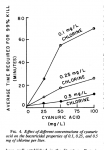Hi Donldson,
Some common misconceptions with filtration especially DE. DE creates a filter cake where the particles have nominal size of 5 to 100 micron. The diatoms have great porosity with many tiny pores as small as 0.1 micron. Please don't take my word on that:
"DE is a chalky sedimentary material, comprised of the skeletal remains of prehistoric water microorganisms (single-celled algae) [17], called diatoms. They are characterized by size in the range from under 5 to over 100 mm and porous structure with openings as small as 0.1 mm in diameter. " Citation: On the Particles Size Distributions of Diatomaceous Earth and Perlite Granulations Petrović, D.V. ‒ Mitrović, Č.B. ‒ Trišovic, N.R. ‒ Golubović, Z.Z. Dragan V. Petrović1 ‒ Časlav B. Mitrović2,* ‒ Nataša R. Trišovic2 ‒ Zorana Z. Golubović2 1 University of Belgrade, Faculty of Agriculture, Serbia 2 University of Belgrade, Faculty of Mechanical Engineering, Serbia
A few dynamic effects occur. 1) Filter cakes are formed. Even though the particle porosity is greater than the filtered particle the winding path thru will catch and sequester particles and organisms. 2) DE has many many tiny pores which catch organisms which will get sequestered, 3) build up in the filter cake will actually improve filtration and reduce particle size filtration as filter cakes grow! So a filter cake with contaminates actually perform better at filtration than a fresh cake.
Now I never said the filter would purify the water. Due to the great porosity counts will pass thru the filter. Even Reverse osmosis filters are not and cannot be used to remove bacteria although like your pool filter the filtered side will post lower counts. Pathogen counts which are bound in the filter are far less of a concern to swimmers. Also noting, wash your hands real good after cleaning your filter as there are nutrients which will accumulate in the filters which help growth. I know for fact legionella loves to grow in sand filters sadly. Neverless the filter will not remove all contaminates but help in the system.
As to bacterial life span in a pool, many might be surprised at the longevity in chlorine:
View attachment 97100
Citiation:
Factors Influencing the Effectiveness of Swimming
Pool Bactericides
G. P. FITZGERALD AND M. E. DERVARTANIAN
Water Chemistry Laboratory, University of Wisconsin, Madison, Wisconsin 53706
Indicates kill off times for a 2 log reduction in bacteria can take easily 5-10 minutes. Other citations I've seen state 19 minutes (likely test at 6 log reduction.
Anyway, my interest in this subject is now stoked, I'll be spending more free time investigating the literature looking for micro studies on pools. If your interested I'll gladly share anything interesting I find.
Regards!


